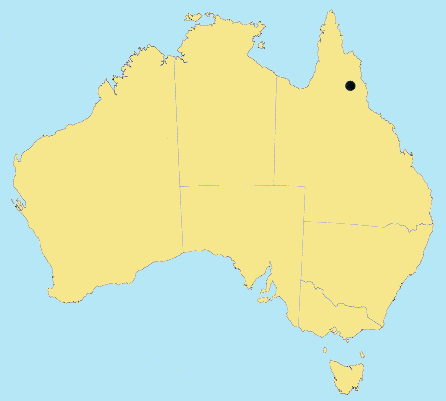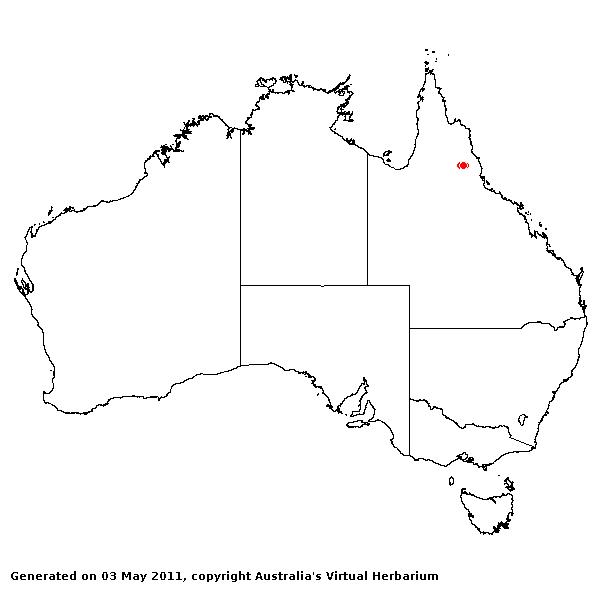Panicum chillagoanum B.K.Simon. Austrobaileya
3: 596 (1992).
Classification. (GPWG 2001) : Subfamily
Panicoideae. Paniceae.
Type of Basionym or
Protologue Information: LT: J. Clayton 454, USA: Virginia (BM; ILT:
US-80553 (fragm.& photo ex BM)). LT designated by Hitchcock, Contr. U.S.
Natl. Herb. 12: 118 (1908).
Key references
(books and floras): [2002] D.Sharp & B.K.Simon, AusGrass, Grasses of
Australia.
Habit. Annual.
Culms erect, 15–60 cm tall, 2–3 -noded. Lateral branches simple. Ligule a
fringed membrane, a ciliate membrane, 1 mm long. Leaf-blades linear or
triangular, 2–12 cm long, 2–5 mm wide. Leaf-blade surface indumented.
Inflorescence.
Inflorescence compound, a panicle. Panicle ovate, 4–25 cm long.
Spikelets.
Spikelets pedicelled. Fertile spikelets 2-flowered, the lower floret barren
(rarely male), the upper fertile, comprising 1 basal sterile florets,
comprising 1 fertile floret(s), without rachilla extension, lanceolate, dorsally
compressed, 2.1–2.7 mm long. Rhachilla internodes elongated between glumes.
Glumes. Glumes
dissimilar, thinner than fertile lemma. Lower glume ovate, membranous, without
keels, 5 -nerved. Upper glume ovate, 2.1–2.7 mm long, membranous, without
keels, 5 -nerved. Florets. Basal sterile florets 1, barren, without
significant palea. Lemma of lower sterile floret 100 % of length of spikelet,
membranous.
Fertile lemma 1.5 mm
long, without keel. Anthers 3.
Continental
Distribution: Australasia.
Australian Distribution:
Queensland.
Queensland:
Cook.
Notes.
Native; Qld (Cook district, on limestone).



